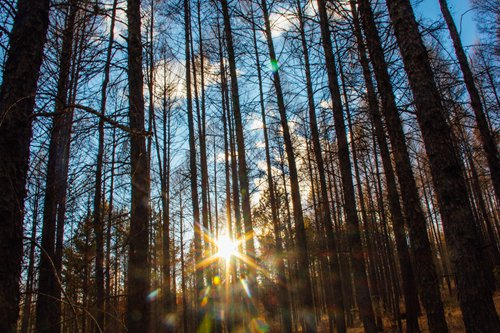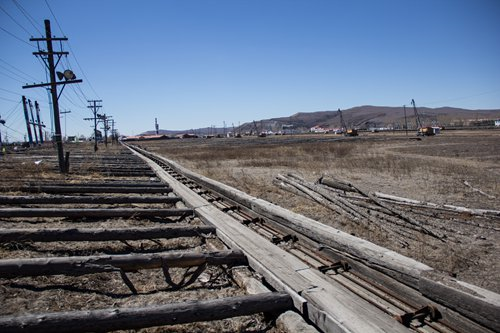
From the People's Daily app.
And this is Story in the Story.
Commercial logging in China's natural forests was phased out in 2017 and has been replaced by what's known as the carbon emissions trading scheme (ETS).
Wuerqihan is a town deep in the forests of the Great Khingan Mountains of North China's Inner Mongolia Autonomous Region that used to rely on logging, which brought in a consistent stream of wealth, but processing in its log yard came to an end in 2015.
At that point, the Inner Mongolia Key State-owned Forestry Administration switched its focus from logging to planting trees and fire prevention, which impacted the forestry industry so the Greater Khingan Mountains set a goal to build China's largest carbon trade base.
The Wuerqihan forestry bureau saw an immediate decline so actively joined in as one of the six pilot provincial markets.
Today's Story in the Story looks at the transition Wuerqihan has made from logging to carbon trading.

The forests in Wuerqihan forestry bureau (Photo: GT)
The log yard used to be the heart of Wuerqihan, but now it is abandoned.
"These two will be antiques here," Yu Detao, chief secretary of the log yard, said, pointing at two logs left on the floor.
There used to be 300,000 cubic meters of logs processed each year in the yard into different sizes according to client needs. Then the logs were transported to other parts of China.
"A total of 600 workers worked together, 24 hours non-stop here," Yu said, "Even in winter, when the temperature was -20 C."
Trading the processed logs constantly brought wealth to Wuerqihan.
"People envied us who worked in the forestry system," an employee at the Wuerqihan publicity department, surnamed Ma, said.
In 2017, a carbon sink office was established there, aiming to promote building the trade market and fostering the talent.
China initiated the carbon emissions trading system in 2011, which includes power generation, iron and steel production and cement manufacturing sectors in seven provinces and municipalities, according to Xinhua.
Under the scheme, enterprises are assigned emission quotas, and those producing more than their share of emissions are allowed to buy unused quotas on the market from those that cause less pollution.

The log yard in Wuerqihan has been abandoned after a logging ban in China in 2015. (Photo: GT)
Li Gao, a senior official of the Ministry of Ecology and Environment, said at a press conference in November 2018 that China will advance the construction of the carbon trading market step by step and gradually expand industries, trading entities and categories that participate in the carbon market.
The carbon sink trade is an important part of the carbon emissions trading system.
Since 2013, more than 100 forest carbon sink projects across China have been filed. A total of 508 million hectares of artificial forests have been built in five years, People's Daily reported in January 2018.
In 2018, the Wuerqihan bureau developed a sustainable managed carbon sink project with a total of 1,325.74 hectares for 20 years and its total carbon sink production with Chinese Certified Emissions Reduction (CCER) standard would be 44,305 tons of Carbon Dioxide Equivalent, or CO2e.
The project is currently in the process of verifying emission reduction. After this step, the verified carbon units could be issued once the market is completely opened.
"We are just waiting for the opening of China's carbon sink trade market," Bao said.
Wuerqihan means "dawn" in Mongolian language.
Now the Wuerqihan people are in the dawn of the carbon market.
"When the national carbon sink trade market is well built, it will be our successful time again," Bao said.
(Produced by Nancy Yan Xu, Brian Lowe, Lance Crayon, and Chelle Wenqian Zeng. Music by: bensound.com. Text from Global Times and CGTN.)


